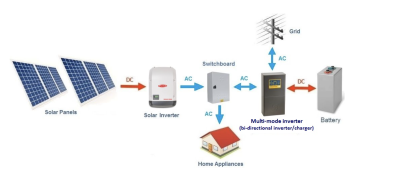magnet creek
New Member
- Joined
- Jul 27, 2022
- Messages
- 55
I am looking for some help in designing an off grid system for 5 off the grid Cabins. All the Cabins will individually have 10kW solar with an 10kW Growatt inverter and LifePo4 20kWh battery storage.
I was wondering if it would be possible to "network" the cabins, so that they would share solar and battery power. So if one cabin gets used more, it uses power from neighboring cabins that are not used or have better solar production. The cabins are relatively close to each other.
Any ideas for such a system design would be welcome; I am especially interested in the "power management" aspects.
I was wondering if it would be possible to "network" the cabins, so that they would share solar and battery power. So if one cabin gets used more, it uses power from neighboring cabins that are not used or have better solar production. The cabins are relatively close to each other.
Any ideas for such a system design would be welcome; I am especially interested in the "power management" aspects.




